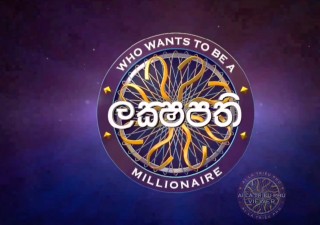Google officials including CEO, employees face raps for copyright infringement in India
16 February 2022

Police in Mumbai, India filed a First Information Report (FIR) against Google, its CEO Sundar Pichai and other officials and employees on January 25, 2022 for showing a movie on YouTube without permission, thus infringing the rights of its copyright owners.
Police prepare an FIR upon receiving information about a certain offense reported by the victim.
The movie, “Ek Haseena Thi Ek Deewana Tha,” a Hindi language romance musical drama released in 2017 in India, was uploaded on the video-sharing platform without either a contract or the consent of its creators.
The movie’s director and producer, Suneel Darshan, sought registration of the copyright violation case before the court. As directed by the court, said case was registered at the MIDC Police Station in Andheri, the seat of India’s Bollywood and located in the western part of Mumbai.
Also named in the FIR are YouTube Head Gautam Anand, Grievance Officer Joe Grier and Google employees Namrata Rajkumar, Pawan Agarwal and Chaitanya Prabhu.
According to an article in The Times of India, a Google representative told Press Trust of India that the platform has “rights management tools” including YouTube’s Content ID system to allow copyright owners to identify and block unauthorized uploads of their works, among others.

“Such tools are not only efficacious, but in all likelihood, will become increasingly efficacious with time. YouTube’s internal tools to block infringing content are known to issue copyright strikes even against uploaded-but-unpublished infringing materials. Currently, copyright owners in India may not be leveraging these tools to their full potential, and may therefore, view legal action against Google as a more efficacious remedy,” said Anuradha Salhotra, founding partner at Rahul Chaudhry & Partners in Gurgaon.
“That said, the effect of such tools to address infringing materials may vary depending upon whether the issue at hand pertains to a straightforward instance of copyright infringement – or an act which is statutorily excluded from being considered as an infringement of copyright. It is unclear, at this juncture, if the systems these platforms have in place to identify infringing content are calibrated to identify infringements in sync with India’s copyright law and statutory exclusions,” she added.
The Google representative also said that Google banks on the initiative of copyright owners themselves to inform them of any content uploaded without their consent.
According to Salhotra, the practice of uploading content on YouTube and other platforms without signing a contract with or seeking permission from the copyright owner is fairly rampant in India. The reason for such is a lack of awareness on copyright law and its implications. This problem is even compounded by the Internet and mass proliferation of smartphone devices and video editing apps.
The absence of an Indian equivalent to the United States’ Digital Millennium Copyright Act (DMCA) may also be a reason.
Salhotra explained: “In the US, the DMCA gives platforms like YouTube safe harbor qua copyright infringements committed by users if and only if they implement a step-by-step mechanism to adjudicate copyright disputes. In India, section 79 of the Information Technology Act, 2000 grants safe harbour protection to the intermediaries for any kind of third-party content. It provides conditional immunity to the intermediary under the ‘due diligence doctrine,’ irrespective of the nature of the content. This in no way implies that absolute immunity is provided to intermediaries, as they are under a mandate to remove any content under a ‘notice and takedown’ regime which requires an intermediary to remove information which does not adequately fulfil the test of being lawful upon receiving ‘actual knowledge.’ It is a safe harbour immunity clause that protected an intermediary from being held liable for third-party content on its platform - provided that the intermediary observed 'due diligence' as prescribed by the Central Government.”
However, Salhotra added that this is ineffective and not a blanket immunity from liability.
“It was held by the Delhi High court in the Myspace Case that ‘Section 79 is neither an enforcement provision nor does it list out any penal consequences for non-compliance. It only sets up a scheme where intermediaries have to follow certain minimum standards to avoid liability; it provides for an affirmative defence and not a blanket immunity from liability,’” she said.
Will the Mumbai police’s FIR against Google – considering the company’s status as a major global technology player – have a strong impact so as to deter infringers from further committing unlawful acts especially in the online space?
This is unlikely, said Salhotra.
“Wilful infringers are likely to be indifferent unless they are identified and legal remedies are exercised specifically against them,” she said. “That said, the FIR against Google may have the effect of encouraging the government to introduce legalization akin to the DMCA of the US – wherein intermediaries are given safe harbour qua copyright infringement claims if they implement a certain mechanism to address copyright complaints by rights owners.”
Espie Angelica A. de Leon






